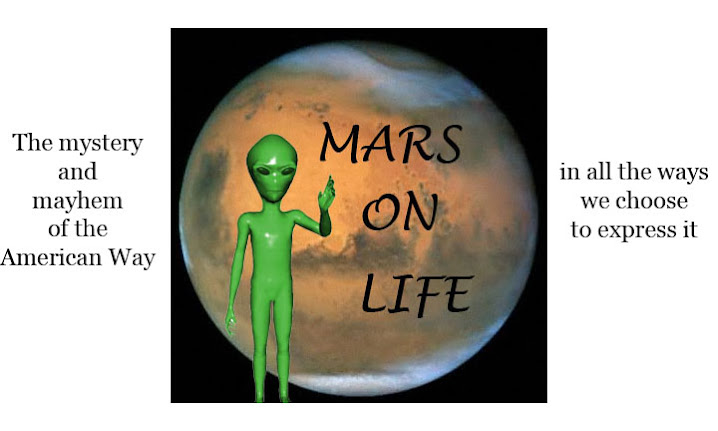
Anyone who misapprehends the relationship between haute couture and the real world need look no further than the autumn of 1977 to see how the fashion trickle-down theory works.
Before we look at 1977, however, we need to jump forward eighteen months, to the early winter of 1979. It was just past Christmas, a time when retailers clear their windows of toy trains and Santas and life-sized polar bears and replace them with what used to uniformly be called cruise collections. Cruise collections are interchangeable with today's resort collections; they both labor under the erroneous and deluded assumption that the people struggling up the icy sidewalks outside Macy's on 34th Street have the wherewithal and leisure time to board a boat to Bermuda. In Macy's perfect world, we all do. There are no minimum-wage workers who have trimmed this window long into the night, long after the well-paid cashiers and the stockroom clerks have gone home to their luxury railroad apartments. The fifth-floor restroom attendant is off today, haven't you heard, headed for Miami F-L-A on the Eastern Airlines L-1011 Whisperjet.
Or perhaps the cruise displays are a bitter tonic as chilled as the winds off the river, reminding one of the panoply of experience in the human drama. Some scrub, some sail. The windows stay the same regardless.
On this bleak January morning, the window displays seem at a particular remove. We won't discover how the people who cannot enjoy the cruise but are expected to enjoy the window came to be the way they are; we are not concerned with causality. In fact, causality is a waste of our time except as respects what is on display in the windows. There, warming the gray outside with orange and yellow gels meant to represent the sun, is a tableau depicting a glamorous holiday in the South China Seas.
The color scheme of this collection is fiery. Reds, blacks, yellow, persimmons, celadons, blood oranges, a streak of purple like a Macau sunset. Feathers, fur, and satin trims decorate cuffs and collars; mannequins wear tassels on satin cords. Sarongs, coolie jackets, and frog closures abound; someone's been hitting the 100-proof Chinoiserie.
That someone is Yves St. Laurent, a designer whose haute couture will never be carried by Macy's or worn by Macy's sale-shopping subway riders. In the third week of July 1977, St. Laurent unveiled his autumn/winter 1977 collection--Collection Chinoise et Opium--and now the frozen office workers outside of Macy's window are gaping at thematic trickle-down in its purest and most relative form.
St. Laurent was on an exotic-destination high that summer of 1977, having earlier discoursed on Les Ballets Russes, gypsies, and peasants a l'Espagnole. Now he ventured onto the steppes of Outer Mongolia for a fantasy (but still wearable) collection, his most sumptuous to date. In a 2.5-hour runway show, St. Laurent sent models down the catwalk in Empress dresses (robes d'Imperatrice), pantalons, vests, jackets, and kimonos. These garments were rendered in suede, taffeta, silk, oilskin, damask, satin, and velvet with gold-thread embroidery, tassels and mink trim. The gold thread cost $200 a meter. Tatar and Chinese influences were equally represented in a triumph of aesthetic refinement. It was a banner year for St. Laurent and one that would be capped off by the release of the iconic Opium fragrance several months later. The fragrance was already completed by the time of the runway show, making for the rare occurrence of a singular runway collection having a brand-extension fragrance.
Opium and the couture collection were what inspired the China Seas mania that found its way to Macy's a year and a half later. Once inside the giant retail store, the influence proved not to be limited to a cruise collection. The entire main cosmetics and fragrance area had been redecorated to reflect the theme; tying into this was the release of the Estee Lauder fragrance Cinnabar, a heavy-handed Opium derivative. The accessories counter featured tiger-striped scarves and the tasseled necklaces seen on Jerry Hall in the advertisement above.
What St. Laurent had started was huge. This was no mere case of a color or a shape making a subtle, bastard mimcry in a cheap nylon sweater. Mass-market designers had aligned themselves with the collection's provenance and had expanded it southwards for summer, including bandeaux and turbans that would make appearances on the disco dance floors of the boroughs well into 1980.
The urgency with which the Chinoiserie was adopted spoke volumes about the influence of haute couture upon the mass market. The direct quotation of motif, mindset, and mood may have been lost on the frozen morning commuter, but it was absolute fashion homage at its most undeniably reverential.
Link: Fondation Pierre Bergé - Yves St. Laurent
Monday, January 7, 2008
Faisons un tour de Chinoiserie, 1977
Subscribe to:
Post Comments (Atom)









12 comments:
If you keep doing posts like this, I'm going to fall in love with you and maybe have to stalk you or create a shrine to you in my bedroom.
WB, I am always aware that you are a woman of extraordinary taste and history and hence would appreciate these random blasts from our New York past.
Now, since we all must have a stalkerific person at some times in our lives, I will gladly accept you in your vintage Versace.
I will share the wall with your Sean Cassidy posters. Your husband will be thrilled.
Fascinating, really! I find my library books getting a little dusty when you have posts like this for me to read.
I love these history lessons! Keep them coming please.
Thanks, ladies! I have a memory for visuals and am glad to be able to share them with you.
Claire, I have some other things up my sleeve that you might enjoy.
I think occasions of haute couture filtering down in this way occur more than we think. Somehow, someway, something like a remote and mystical supposedly elite fashion show will make its way down to those commuters....
Very interesting, I had no idea about the history of Opium. Also even though the collection was inspired mainly by Mongolia, it didn't come too long after the end of Vietnam, maybe the masses grabbed the China/Asian influence as part of "relief" that it was all over and now they could celebrate this culture. I loved what you said about the cruise/resort term -excellent! I never look at resort collections because in my mind the term conjours up exactly that - rich people going to expensive summer resorts, so I don't think I'd need resort clothing other than the occassional new bikini and swimming towel. Maybe I should go check them out for interest sake.
Susie, yes, there is always a conduit from one end of the spectrum to the other. This particular collection interested me as a student of fashion history because it had made a huge impact on the world of fashion (and because I couldn't afford it) and was so visually memorable. It really was lifted wholesale off the runway and dropped down into retail windows later, more so than other collections (Ralph Lauren also was one that was aped relentlessly).
Bronwyn, St. Laurent was on a tour of exotica (as defined in 1977 terms). He'd already done other "cultural" collections moored in Spain, in peasant and gypsy culture, and in Russia. Thematically the "Orient" was popular that year. In addition to St. Laurent, both Ungaro and Jules-Francois Crahay for Lanvin touched upon the same idea.
Amazing post, I feel like I'm learning so much about fashion history everytime I read your blog. I'm really surprised by the Asian influence, despite being Chinese it never even occured to me!
WndyB - Oh, honey, I've already done that! SM is marrying me, she just doesn't know it yet!
This is really fascinating, I love your fashion history posts. How do you know so much about these topics?
Stephanie, I keep my eyes and ears open. I also lived through it.
Post a Comment